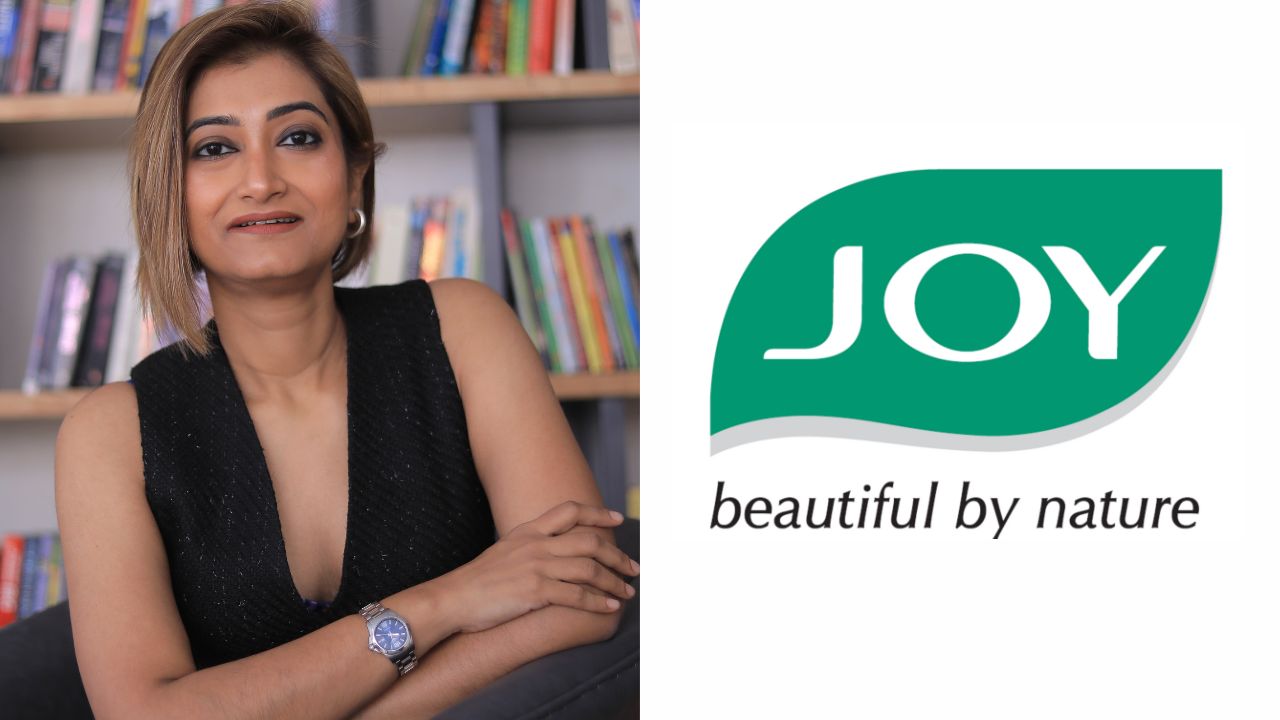Joy Personal Care, a leading skincare brand, is charting an ambitious path to achieve Rs 1,000 crore in revenue by the end of FY26. The company closed FY25 at Rs 750 crore and plans to fuel future growth through a sharper focus on high-potential product categories like face wash and sunscreen, deeper penetration in key regional markets, and a 10% increase in advertising spends.
In an interview with Storyboard18, Poulomi Roy, the Chief Marketing Officer, shares how the company is aligning marketing and communication strategies to drive this next phase of growth.
Edited excerpts:
The company has set a target of achieving Rs 1,000 crore revenue by March 2026. Where will this growth come from?
We closed FY25 at Rs 750 crore. Retail expansion and focused product expansion will be the two key enablers of the Rs 1,000 crore target. It’s not about launching too many new products, but identifying focus categories, which helps align both our distribution and marketing efforts.
First, we’re concentrating on key categories including face wash and sunscreen (summer portfolio). In the lotion category, we already have a decent market share, and our goal is to retain and continue to grow it. But in terms of potential, face wash is where we see significant room to scale. The cream category is another area of strength.
We’re also working closely on strengthening our presence in specific geographies. Traditionally, North India—especially Rajasthan, MP, UP, and Delhi—has been very strong for us. Recently, we’ve started putting more focus on Maharashtra and West Bengal, both in terms of distribution and regional marketing. Our approach is to maintain our lead in P1 markets and aggressively grow in P2 markets.
How are you leveraging your distribution channels to support this expansion?
We currently have around 2.5 lakh outlets under direct and indirect distribution. We intend to strengthen the retail presence by expanding the direct distribution network to 500,000 outlets within the next three years.
General trade contributes about 65% of our revenue, making it our largest channel. For a product like ours, which isn’t highly priced, it’s hard to maintain high margins on e-commerce. So, we don’t view e-commerce as a high-profit channel— it’s more about availability and reach.
General trade, though difficult to manage, is a better product-market fit from a price index and profitability perspective. We’re not aiming to launch super-premium products. Under the Joy brand, one will never see something priced extremely high. We want to offer quality products at affordable prices. That means growth for us will always be volume-led—more people using our products, increasing both penetration and loyalty.
What about South India? Why hasn’t it become a big market for you yet, and are there plans to enter general trade there?
We’ve actually seen significant e-commerce sales in Bangalore. However, we’ve held back from entering general trade in the South for a couple of reasons. Initially, our products were more popular in North India because we started off making winter cream. When we moved into the summer portfolio with face wash, we started selling through e-commerce and some modern trade. But we didn’t expand to general trade because, as an FMCG skincare company, general trade requires heavy investment and we don’t want to spread ourselves too thin.
The South is made up of four culturally distinct, non-Hindi-speaking states. The media landscape is fragmented—both a boon and a bane. So, you have to plan media strategies for each state separately. That takes time, money, and effort. One can’t replicate what works in the Hindi-speaking market and expect the same results. We want to be mindful and ready before entering.
You’ve previously explored men’s skincare- any plan on re-entering or branching out into other categories?
No, we’re not getting into the men’s category anytime soon. When we initially explored it, and realized we were putting too many eggs in one basket. The reality is that we are a privately owned organization with no external funding and extremely P&L conscious. With limited budgets, if we try to spread ourselves too thin with too many brands, we won’t be able to do justice to even one. That was the primary reason we decided it wasn’t the right time to branch into a completely separate brand and segment. It would require significant attention and investment—time, money, and resources.
We are not looking into getting into cosmetics either. I don’t say this for the far future—maybe after five years; you never know how the world turns out.
Walk us through your marketing play, and how does your association with the Indian Premier League and the Kolkata Knight Riders fit into your plan?
In terms of ad spends allocation, traditional is around 60%, and digital is about 40%. But it’s increasing on the digital side every year; I wouldn’t say it’s eating into TV completely- it’s more about increasing budgets in general, and a large portion of that is definitely getting allocated to platforms like Google and Meta.
We keep a contingency plan, and our idea is simple—we can’t be flamboyant, like allocating 30–40% to marketing budgets. We’ve always operated on very strict budgets because it’s important to ensure the P&L remains steady. Conservatively, we’re looking at around an 8–10% increase year-on-year. It’s not about increasing just for the sake of it—if a particular part of the business needs seeding, we try to call out extra money for that.
IPL gives us massive reach. Also, our dealers and distributors and the general trade ecosystem is primarily male. Cricket resonates strongly with them. So, our IPL association becomes a trade tool too. We layer IPL with year-round trade activations. Beyond margins and discounts, we’re building stronger relationships with our distribution partners. So our strategy is a combination of push and pull. We equip our partners to push the product, while ensuring consumer awareness creates the pull. IPL helps with both consumer credibility and trade confidence.
